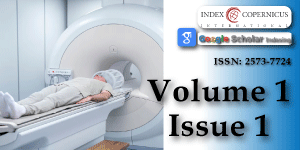Empirical formulae for calculating γ-ray detectors effective solid angle ratio
Main Article Content
Abstract
Determination of the detector efficiency using volumetric cylindrical sources is very important in various scientific and industrial fields, especially in the field of quantitative analysis. To calculate the absolute activity of any sample, the full-energy peak efficiency (FEPE) of the detector is needed. By applying the efficiency transfer method, the FEPE of the detector would be determined easily without using the standard sources. This approach depends on two main factors. The first one, is the reference efficiency of the reference source, which is determined experimentally, and the second one, is the calculation of the effective solid angle ratio between the sample and the reference source geometries. This work introduces an empirical formula for calculating the second factor for using two different sizes of NaI(Tl) detectors. The validity of this empirical formula was successfully demonstrated by comparing the calculating values with the experimental values.
Article Details
Copyright (c) 2017 Khatib AM, et al.

This work is licensed under a Creative Commons Attribution 4.0 International License.
Debertin K, Helmer RG. Gamma- and X-ray spectrometry with semiconductor detectors. North-Holland. 1988; New York. Ref.: https://goo.gl/fHfUb8
Lippert J. Detector-efficiency calculation based on point-source measurement. Int J Appl Radiat Isot. 1983; 34: 1097-1103. Ref.: https://goo.gl/wOQveD
Moens L, Hoste J. Calculation of the peak efficiency of high-purity germanium detectors. Int J Appl Radiat Isot. 1983; 34: 1085-1095. Ref.: https://goo.gl/j3IxZv
Haase G, Tait D, Wiechon A. Application of new monte carl method for determination of summation and self-attenuation corrections in gamma spectrometry. Nucl Instrum Methods. 1993; A336: 206-214. Ref.: https://goo.gl/x4tnng
Wang TK, Mar WY, Ying TH, Liao CH, Tseng CL, et al. HPGe detector absolute-peak-efficiency calibration by using the ESOLAN program. Appl Radiat Isot. 1995; 46: 933-944. Ref.: https://goo.gl/Lgl3lc
Wang TK, Mar WY, Ying TH, Tseng CH, Liao CH, et al. HPGe Detector efficiency calibration for extended cylinder and Marinelli- beaker sources using the ESOLAN program. Appl Radiat Isot. 1997; 48: 83-95. Ref.: https://goo.gl/dQNx77
Lépy MC, Altzitzoglou T, Arnold D, Bronson F, Capote Noye R, et al. Intercomparison of efficiency transfer software for gamma-ray spectrometry. Appl Radiat Isot. 2001; 55: 493-503. Ref.: https://goo.gl/WfSS3v
Vidmar T, Aubineau Laniece I, Anagnostakis MJ, et al. An intercomparison of monte carlo codes used in gamma-ray spectrometry. Appl Radiat Isot. 2008; 66: 764-768. Ref.: https://goo.gl/e35Sd8
Badawi MS, El-Khatib AM, Krar ME. New numerical simulation approach to calibrate the NaI(Tl) detectors array using non-axial extended spherical sources. Journal of Instrumentation. 2013; 8: 11. Ref.: https://goo.gl/ut1p4i
Badawi MS, Krar ME, El-Khatib AM, Jovanovic SI, Dlabac AD, et al. A new mathematical model for determining the full energy peak efficiency (FEPE) for an array of two γ-detectors counting rectangular parallelepiped source. Nuclear Technology & Radiation Protection Journal. 2013; 28: 370-380. Ref.: https://goo.gl/LYmnac
Badawi MS, Elzaher MA, Thabet AA, El-khatib AM. An empirical formula to calculate the full energy peak efficiency of scintillation detectors. Appl Radiat Isot. 2013; 74: 46-49. Ref.: https://goo.gl/V5PDsr
Abbas MI. A direct mathematical method to calculate the efficiencies of a parallelepiped detector for an arbitrarily positioned point source. Radiat Phys Chem. 2001a; 60: 3-9. Ref.: https://goo.gl/JypVh5
Abbas MI. Analytical formulae for well-type NaI(Tl) and HPGe detectors efficiency computation. Appl Radiat Isot. 2001b; 55: 245-252. Ref.: https://goo.gl/hLQSKd
Abbas MI, SelimYS. Calculation of relative full-energy peak efficiencies of well-type detectors. Nucl Instrum Methods A. 2002; 480: 651-657. Ref.: https://goo.gl/9AMrXx
Abbas MI. HPGe detector absolute full-energy peak efficiency calibration including coincidence correction for circular disc sources. J Phys D Appl Phys. 2006; 39: 3952-3958. Ref.: https://goo.gl/89DOYb
Abbas MI, Nafee SS, Selim YS. Calibration of cylindrical detectors using a simplified theoretical approach. Appl Radiat Isot. 2006; 64: 1057-1064. Ref.: https://goo.gl/M4DM6l
Debertin K, Schotzig U. Coincidence summing corrections in Ge(Li)-spectrometry at low source-to-detector distances. Nucl Instrum Meth A. 1979; 158: 471-477. Ref.: https://goo.gl/CJ5NGn
El-Khatib AM, Thabet AA, Elzaher MA, Badawi MS, Salem BA. Study on the effect of the, self-attenuation coefficient on γ-ray detector efficiency calculated at low and high energy regions. Journal of Nuclear Engineering and Technology. 2014; 46: 217-224. Ref.: https://goo.gl/wpoBxI
El-Khatib AM, Badawi MS, Elzaher MA, Thabet AA. Calculation of the peak efficiency for NaI(Tl) gamma ray detector using the effective solid angle method. Journal of Advanced Research in Physics. 2012; 3: 021204. Ref.: https://goo.gl/bqKYOW

